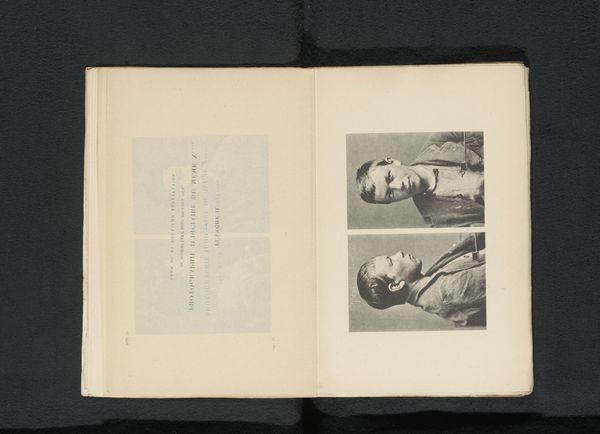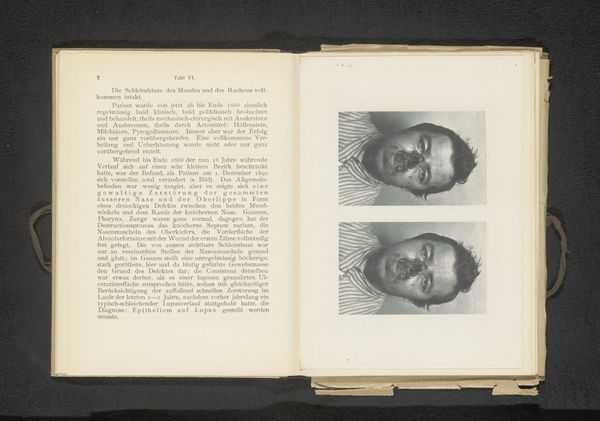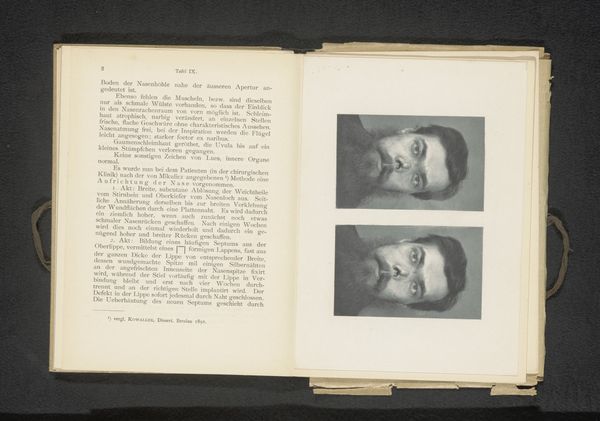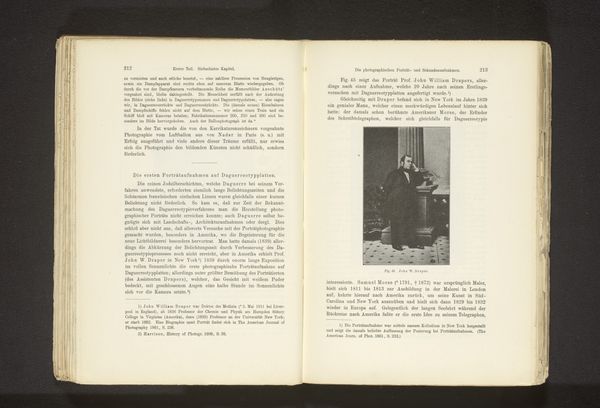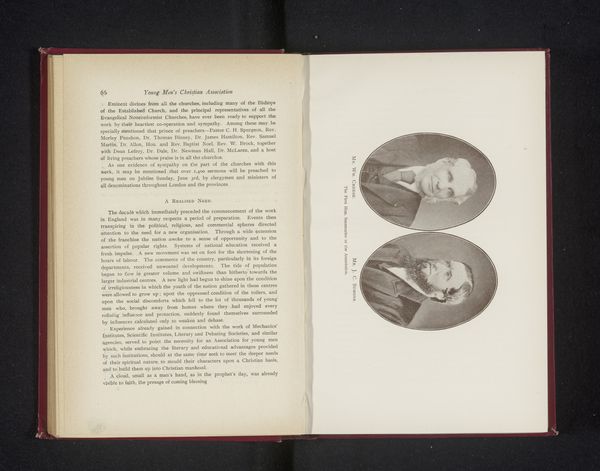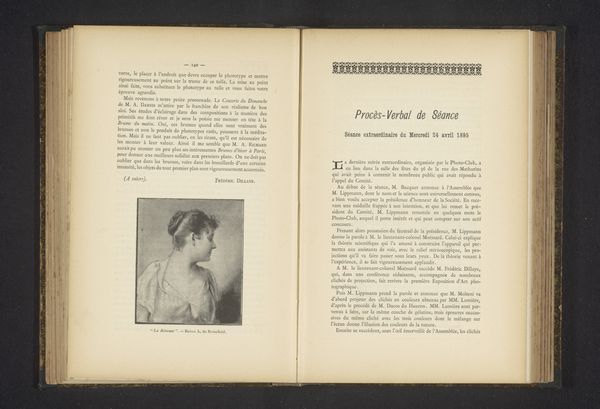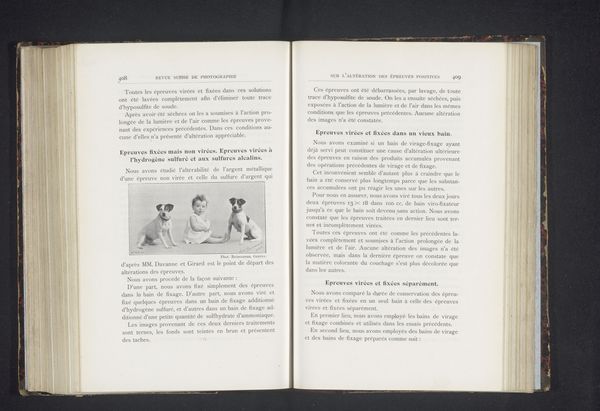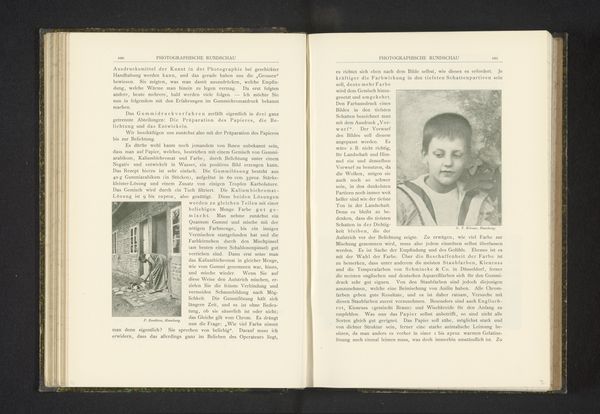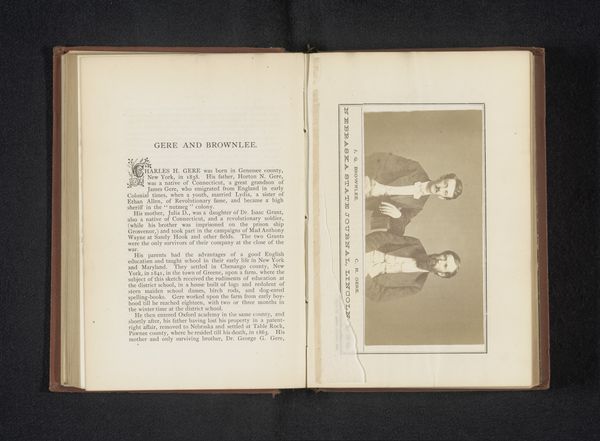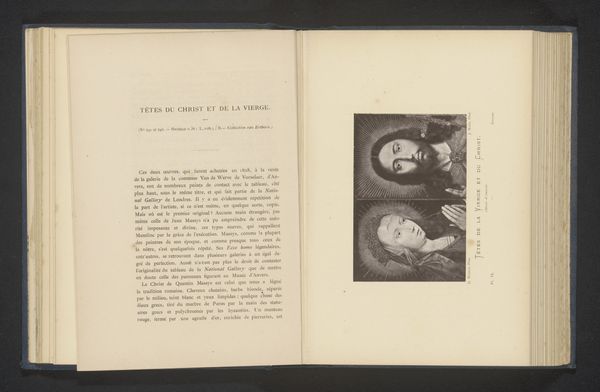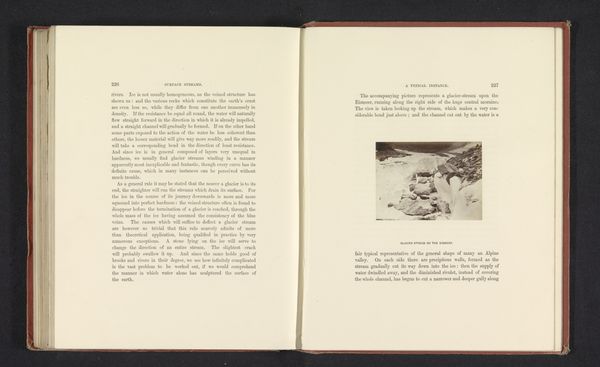
Fotoreproducties van een portret van Wilhelm II en een portret van Arthur Korn, verzonden per telegraaf before 1908
0:00
0:00
print, photography
#
portrait
# print
#
photography
#
history-painting
#
academic-art
Dimensions: height 80 mm, width 109 mm
Copyright: Rijks Museum: Open Domain
Editor: Here we have what seems to be a book page with two photographic prints, described as "Fotoreproducties van een portret van Wilhelm II en een portret van Arthur Korn, verzonden per telegraaf," dating to before 1908. The contrast between the two portraits is immediately striking, one figure recumbent, the other in full military attire. What details stand out to you, from your perspective? Curator: Well, I’m immediately drawn to the materiality of this object. We're not looking at original photographs but reproductions, embedded within the pages of what seems to be a printed book or journal. The means of production are multi-layered. First, the portraits themselves required photographic technology. Then they are printed as illustrations in a book with descriptive text. Finally, and perhaps most importantly, these images were ‘verzonden per telegraaf’—transmitted by telegraph. Editor: Interesting! So the *process* of getting the images from one place to another is really the point? Curator: Precisely. Consider the social context. The early 20th century witnessed rapid advancements in communication technologies. This object speaks to the fascination with instantaneous communication and its impact on image distribution and potentially its influence on creating "history". Think of labor division: who produced the images? Who telegraphed it? Who was intended to consume it, and how might the technology reinforce or undermine existing social structures? The telegraph becomes not just a tool, but an active participant in creating a visual representation. Editor: I see your point about the process and all these different levels of production being key to the object’s cultural meaning. The material reminds us that images aren't simply reflections of reality but products of technological and social systems. Thanks! Curator: And thinking through these aspects brings these seemingly simple book illustrations to vivid life. Thank you for guiding me!
Comments
No comments
Be the first to comment and join the conversation on the ultimate creative platform.
